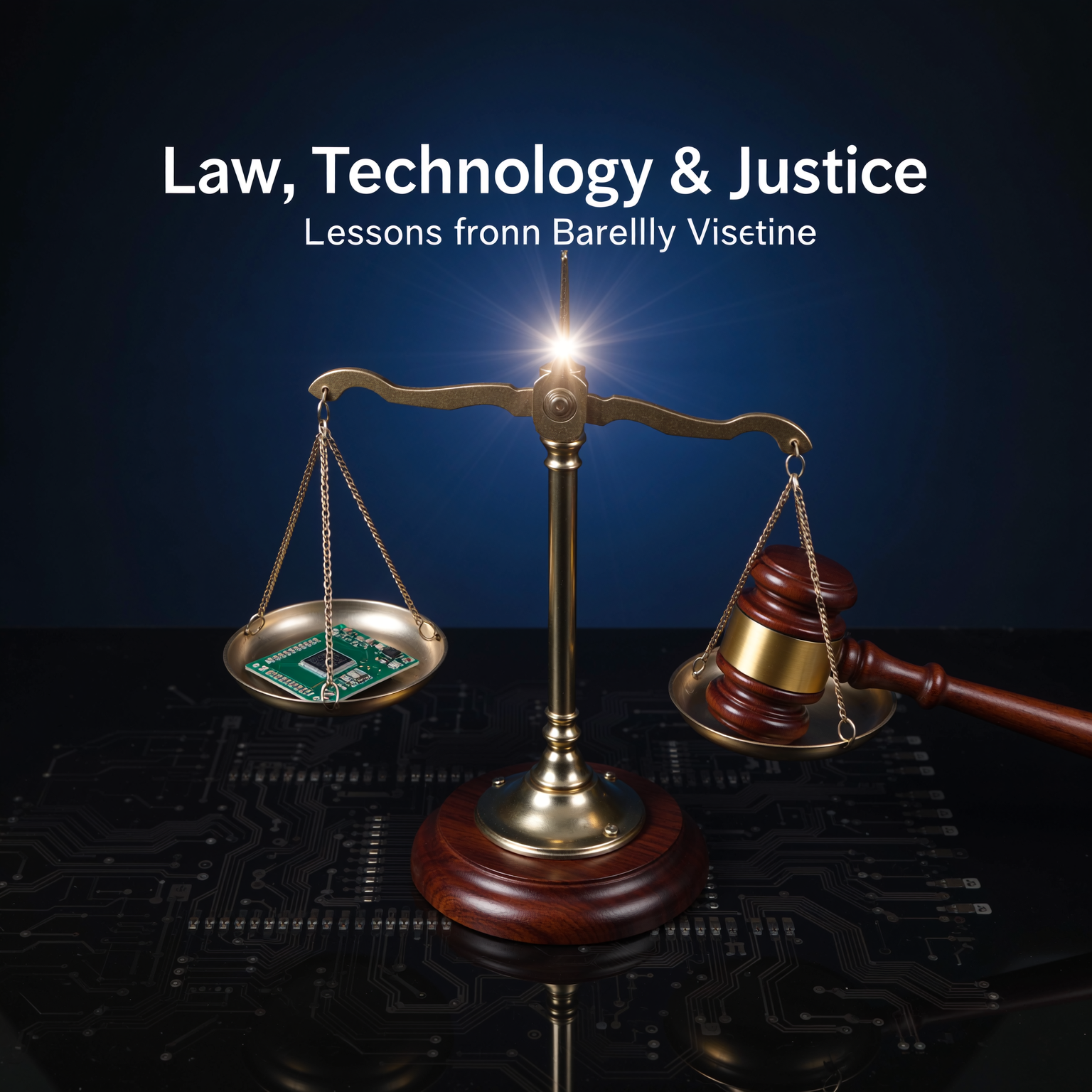⚖️ Law, Technology & Justice: Lessons from Bareilly Violence
The recent Bareilly violence is more than a news story—it is a case study in how law, technology, and policy intersect. As a first-semester law student, I see it as a lesson in constitutional safeguards, digital evidence, environmental accountability, and AI governance.
📜 Constitution: The First Layer Context: Bareilly violence led to loss of life, liberty, and public order.
Relevant Articles:
Art. 14 → Equality before law Art. 19(2)(3) → Limits on speech & assembly for public order Art. 21 → Right to life and liberty
💡 The Constitution is the foundation of accountability.
🏛️ BNS: Substantive Criminal Law Context: Mob gatherings, online incitement, escalating violence.
Key Provisions:
Sec. 187–190 → Rioting & unlawful assembly Sec. 302 → Murder (if deaths occur) Sec. 111 & 113 → Conspiracy & organized crime (including digital planning)
💡 Violence today is offline action + online conspiracy.
⚡ BNSS: Procedure of Justice Context: Efficient response by police and courts.
Relevant Sections:
Sec. 172 → Police powers to disperse unlawful assemblies Sec. 258 → Recording & admissibility of digital evidence Sec. 532 → e-Trials through video conferencing
💡 BNSS ensures speed + digital-first procedures.
🖥️ Evidence Act: Digital Proof Matters Context: WhatsApp groups, CCTV footage, viral videos.
Bharatiya Sakshya Adhiniyam, 2023:
Sec. 57 → Electronic records admissible Sec. 65B → Digital evidence procedure Sec. 85A–C → Presumption of e-documents Sec. 90A → Electronic records over 5 years
💡 Proof is now in pixels & metadata.
🌱 Environmental Impact of Violence Context: Riots cause burning, smoke, and destruction.
Relevant Law:
Art. 48A & 51A(g) → Environmental duty Environment Act, 1986 – Sec. 15 → Liability for damage Public Property Act, 1984 – Sec. 3 → Penalty for vandalism
💡 Mob violence is also an environmental crime.
🌐 Cybercrime & IT Act Context: Fake news and hate speech online triggered unrest.
IT Act, 2000:
Sec. 66 → Hacking, manipulation Sec. 66F → Cyber terrorism Sec. 67 → Publishing obscene/inflammatory content Sec. 69A → Blocking unlawful content
💡 Cyber forensics traces the digital fingerprints of violence.
🤖 AI Governance Challenge Context: AI deepfakes and predictive policing are emerging issues.
Legal Concerns:
Art. 21 (Privacy) → Limits on surveillance Art. 14 (Equality) → Bias in AI policing Evidence Act, Sec. 65B → Admissibility of AI-generated evidence Global Context → EU AI Act, OECD AI principles, India’s upcoming Digital India Act
💡 AI will test fairness and authenticity in future trials.
🎓 Integrated Learning for Law Students Constitution → Values at stake BNS → Defining crime BNSS → Speeding procedure Evidence Act → Trust in proof Environment Law → Beyond human harm IT Act + AI Policy → Regulating cyberspace
💡 Justice today is hybrid: courtrooms, cyberspace, and the environment.
💬 Engagement Question & Answer Question: Should AI-generated content (like deepfakes) ever be admissible as evidence in court?
Answer: AI-generated content can be admissible under strict legal safeguards:
Authenticity & Verification: Cyber forensic tools, metadata analysis, blockchain timestamps. Reliability: Only content meeting recognized accuracy standards. Transparency: Disclosure of AI tools/algorithms used. Contextual Relevance: Direct relevance to the case, not misleading. Legal Framework: Evidence Act provisions (Sec. 57, 65B, 85A–C) can extend to verified AI-generated material.
💡 Key Takeaway: AI content should supplement, not replace, human judgment. Properly verified, it strengthens justice.
